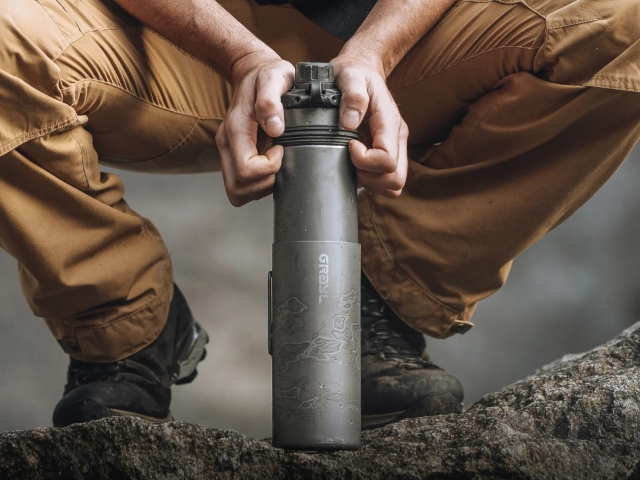
Out in the wild, hiking, camping, or an emergency scenario, what do you want on your side? Water Filters or Tablets?
Water Purification: Water Filters or Tablets?
When you’re in the wild, water purification is crucial for your health. Access to clean drinking water prevents exposure to harmful pathogens that can cause serious illnesses.
Understanding purification methods, such as filters and tablets, helps in making informed choices. Water filters easily remove impurities and provide immediate access to safe drinking water, making them ideal for hiking and camping.
Purification tablets are lightweight and efficient for treating larger quantities of water, effectively killing viruses and bacteria when bulky equipment isn’t practical.
Importance of Water Purification
Drinking untreated water outdoors poses serious risks, even from seemingly pristine sources. Clear mountain streams and tranquil lakes can harbor harmful microorganisms like bacteria, protozoa, and viruses. Bacteria such as E. coli and Campylobacter cause severe diarrhea and dehydration, while protozoa like Giardia and Cryptosporidium lead to stomach cramps and prolonged gastrointestinal issues. Viruses, including Norovirus and Hepatitis A, can contaminate water through human or animal waste, especially in areas with poor sanitation.
Chemical contaminants, particularly near agricultural or mining sites, also pose dangers. Pesticides, heavy metals, and industrial runoff can enter water sources, and standard filters or boiling won’t remove them. Only specialized purifiers with activated carbon effectively reduce these risks. Moreover, blue-green algae blooms in warm, stagnant water release toxins that resist treatment methods, making water unsafe even after boiling or filtering.
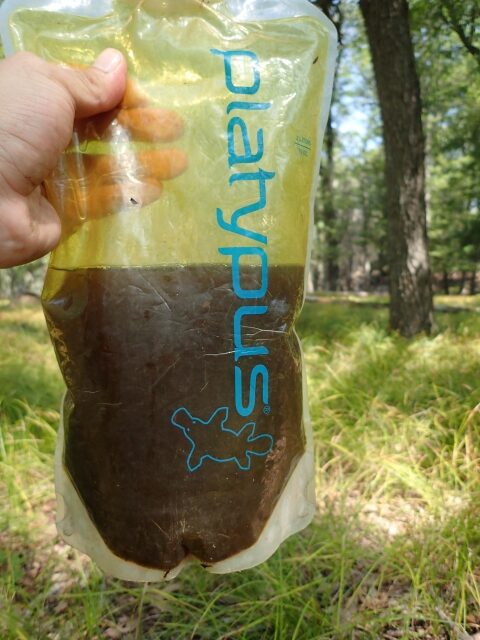
Symptoms from waterborne illnesses vary by pathogen. Bacterial infections cause diarrhea, fever, and stomach cramps, while protozoan infections lead to gas, bloating, and fatigue. Viral infections can trigger nausea and even liver damage. These symptoms can escalate quickly, especially far from medical help.
To stay safe, always treat water before drinking. Use a reliable filter and chemical purification for maximum protection. Boil water for at least one minute—or three minutes at elevations above 6,500 feet—to kill most pathogens. Avoid stagnant or murky water, especially near campsites or trails. Even a single sip of untreated water can cause illness, so take the extra time to purify every drop.
Water Filters
Water filters deliver precision filtration that stands out for frequent use, fast flow, and their ability to remove sediment and pathogens effectively. These systems, utilizing ceramic, hollow fiber, or activated carbon technologies, trap harmful bacteria, protozoa, and microplastics with impressive efficiency. For those seeking even more advanced protection, models like the Sawyer or MSR Guardian take it a step further by eliminating viruses as well, ensuring that every drop you drink is safe and clean.
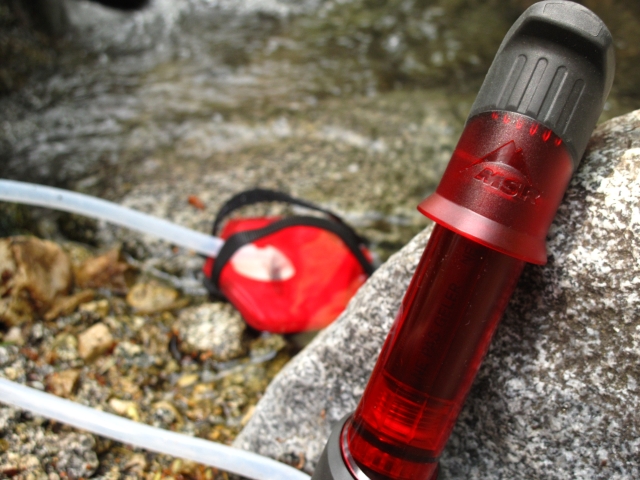
Pros:
- Fast and reusable (some models treat thousands of liters).
- Improves taste and removes sediment.
- Ideal for clear water sources like streams and lakes.
Cons:
- Doesn’t always remove viruses unless specified.
- Can clog over time and require cleaning.
- Bulkier than tablets for ultralight travel.
In the Field: Water Filters
I started my backpacking days with a 1-pound Katadyn Hiker filter. It was bulky and required frequent filter replacements. Eventually, I started using a Press to Pure canteen-style bottle/filter that I needed to squeeze. After that, I used the MSR Hyperflow filter. It was a standout for its speed and weight, delivering up to 3 liters per minute thanks to its hollow fiber technology. If you’re comparing legacy gear or building a weight-conscious kit, this one was a favorite among fastpackers and minimalist hikers.
These filters always turn into a strength workout. On a recent trip to the Adirondacks, three of the four campers were struggling to press the water filter top down by day three. They used the popular GRAYL Filters. Keep in mind, they were strong guys. What if it were a smaller person or a frail hiker?
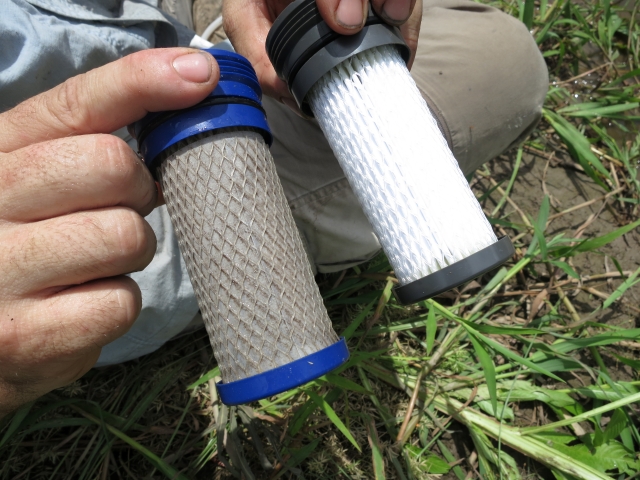
The last time I used a water filter was in 2011 in the Peruvian Amazon Rainforest. I used the MSR Hyperflow four times, and then it was done. I used my backup iodine tablets for the remainder of the trip and never looked back! This event raised a thought-provoking question: Water Filters or Tablets?
Tablets over Filtration
Purification tablets offer a simple yet effective solution for ensuring safe drinking water, making them perfect for ultralight packing, emergency kits, or when you encounter questionable water sources. These tablets, powered by iodine or chlorine dioxide, work by swiftly eliminating bacteria, viruses, and protozoa. Simply drop a tablet into your water and let it do its magic—wait anywhere from 30 minutes to 4 hours, depending on the type of tablet, and you’ll have clean, drinkable water ready to go.
Pros:
- Lightweight and compact.
- Kills viruses—something most filters miss.
- Great backup option.
Cons:
- Doesn’t remove sediment or improve taste.
- Chemical flavor can be off-putting.
- Slower treatment time.
In the Field: Tablets
Carrying an ounce of treatment for several gallons of water makes more sense to me. It’s easier than carrying a clunky water filter that may or may not be functional. Since 2011, I’ve used Potable Aqua-type iodine tablets. Where and what type of water? Clear water in Alaska, to dark, murky, nasty water in the Filipino jungles, with water buffalo bathing in the water. In the Amazon River and its numerous tributaries, I have used iodine with minimal filtering. In the lakes of the Adirondacks, to my local area in the Northeast—iodine only!
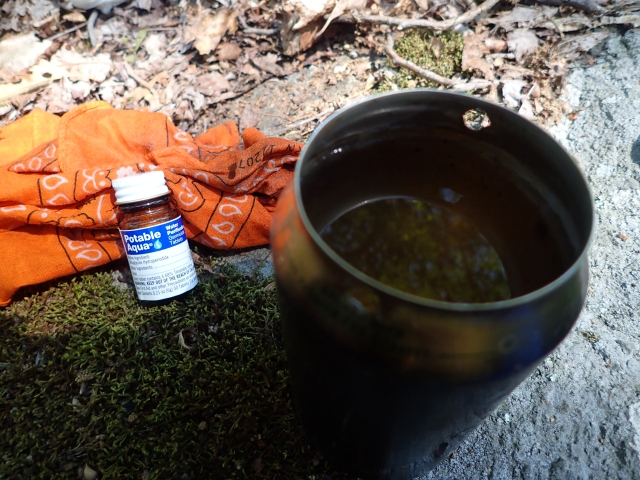
The question of whether to use water filters or tablets is an easy one for me to answer—tablets are my choice every time!
Water Filters or Tablets Wrap Up
Prioritizing water purification in nature is essential for hydration and protection from waterborne diseases. Safe drinking water is a necessity for a healthier and more enjoyable outdoor experience, so make it a priority in your preparations.



